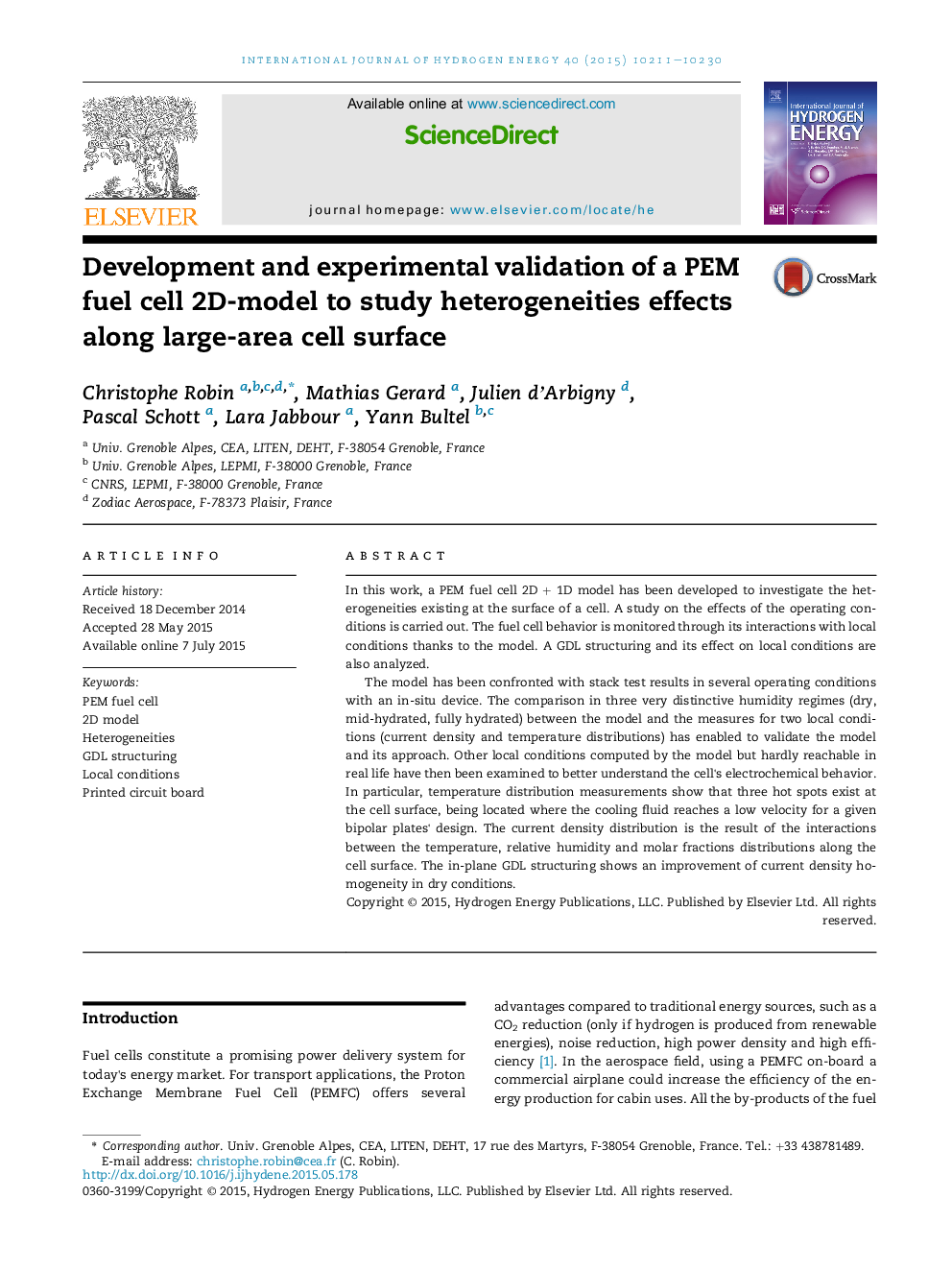| Article ID | Journal | Published Year | Pages | File Type |
|---|---|---|---|---|
| 7714845 | International Journal of Hydrogen Energy | 2015 | 20 Pages |
Abstract
The model has been confronted with stack test results in several operating conditions with an in-situ device. The comparison in three very distinctive humidity regimes (dry, mid-hydrated, fully hydrated) between the model and the measures for two local conditions (current density and temperature distributions) has enabled to validate the model and its approach. Other local conditions computed by the model but hardly reachable in real life have then been examined to better understand the cell's electrochemical behavior. In particular, temperature distribution measurements show that three hot spots exist at the cell surface, being located where the cooling fluid reaches a low velocity for a given bipolar plates' design. The current density distribution is the result of the interactions between the temperature, relative humidity and molar fractions distributions along the cell surface. The in-plane GDL structuring shows an improvement of current density homogeneity in dry conditions.
Related Topics
Physical Sciences and Engineering
Chemistry
Electrochemistry
Authors
Christophe Robin, Mathias Gerard, Julien d'Arbigny, Pascal Schott, Lara Jabbour, Yann Bultel,
